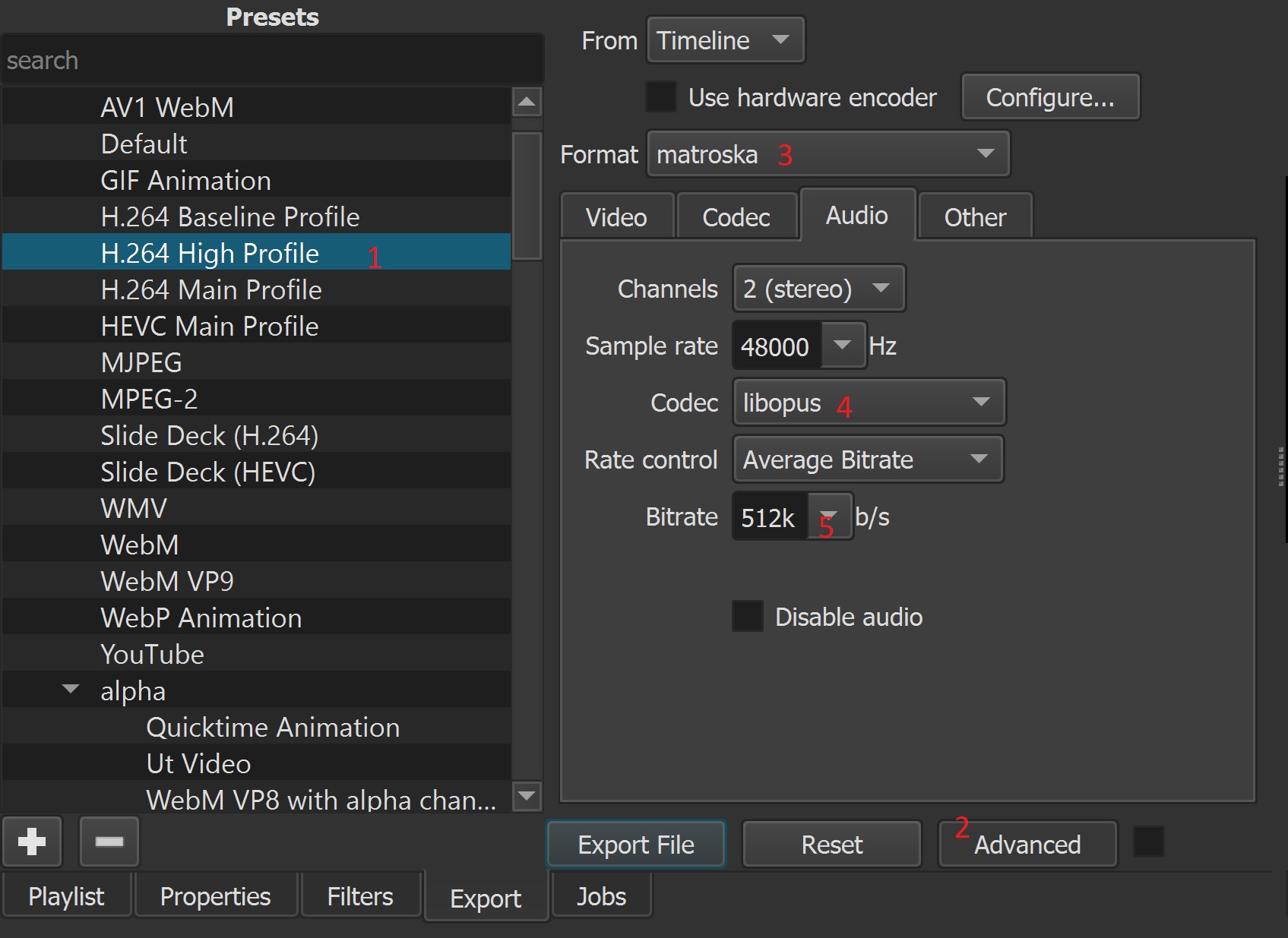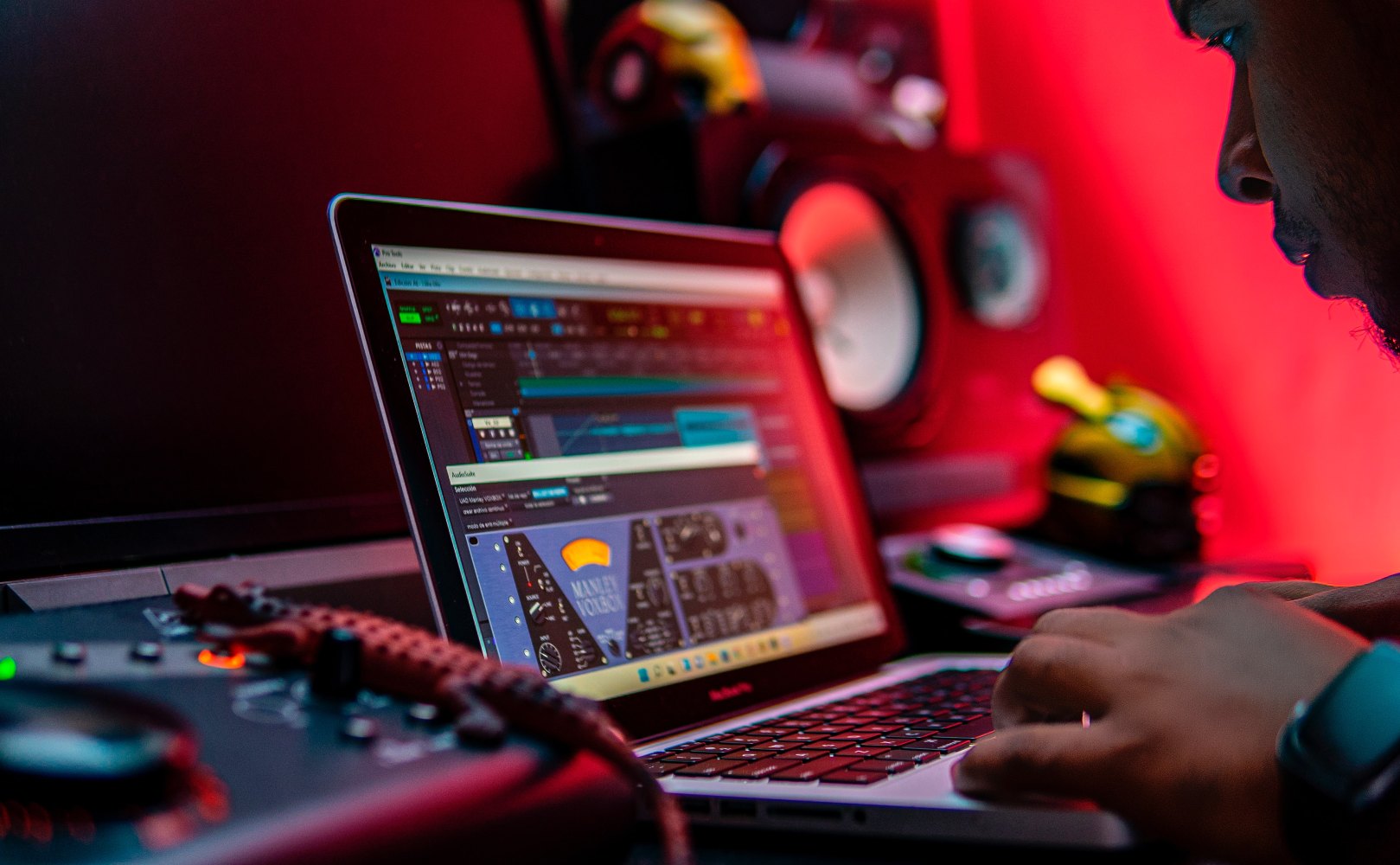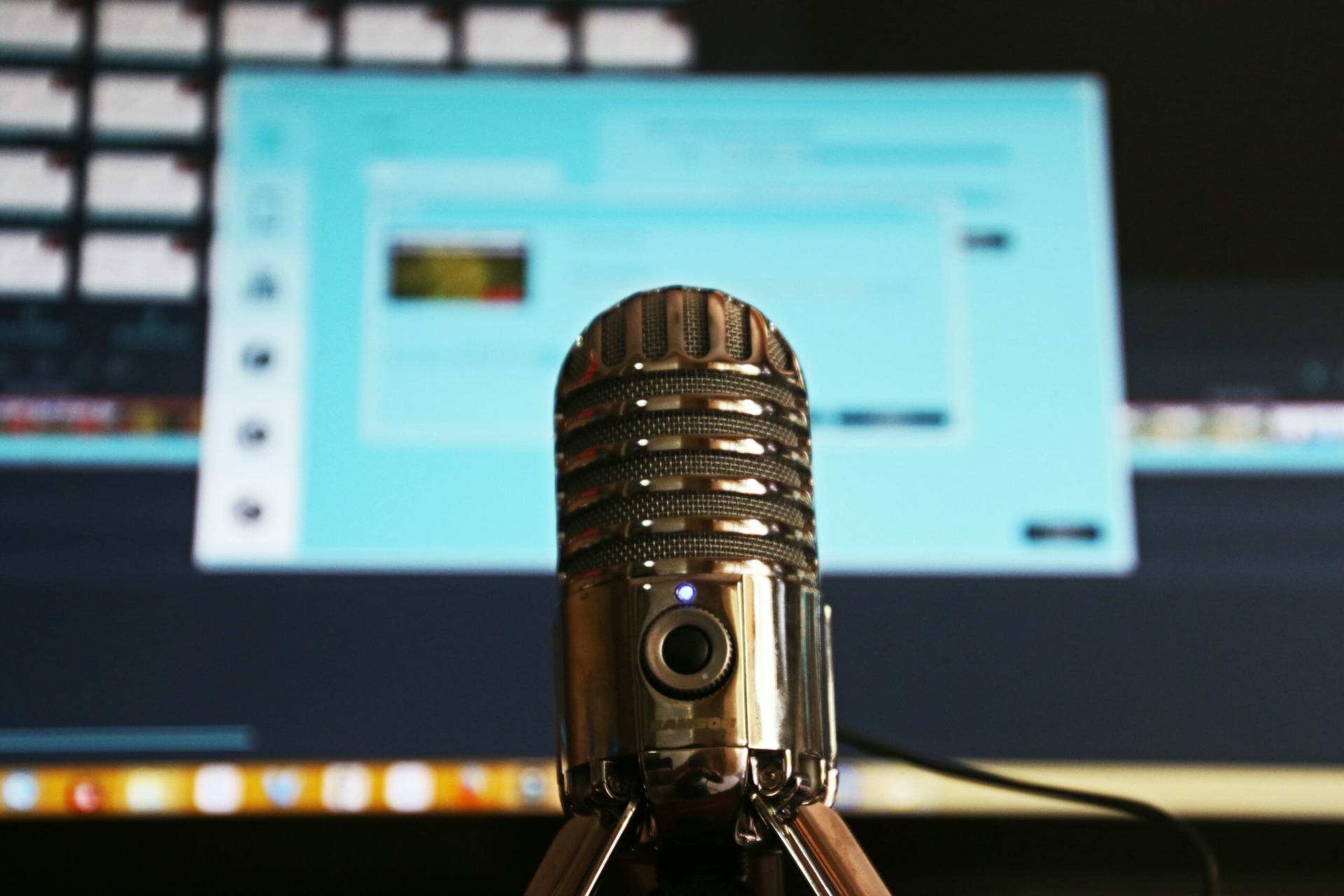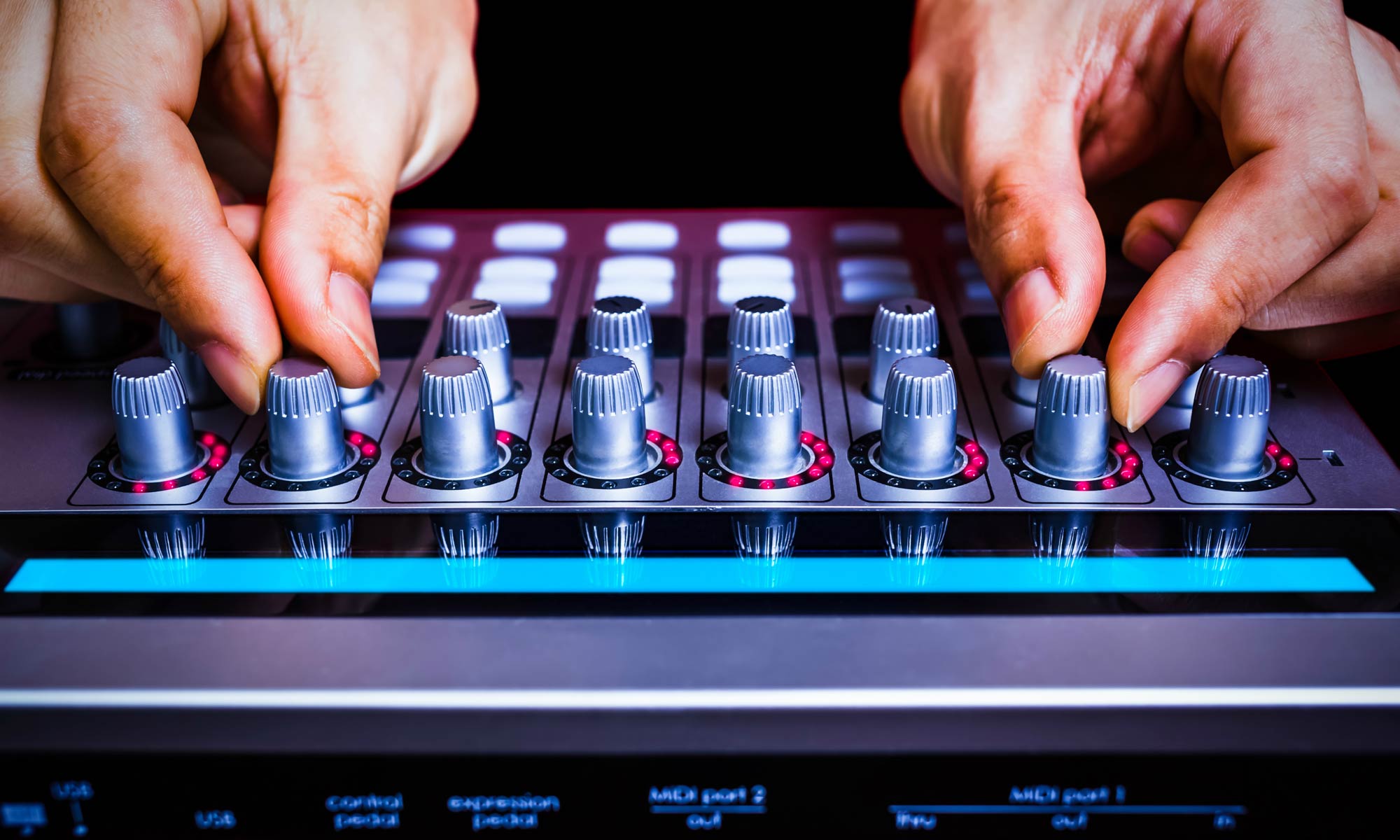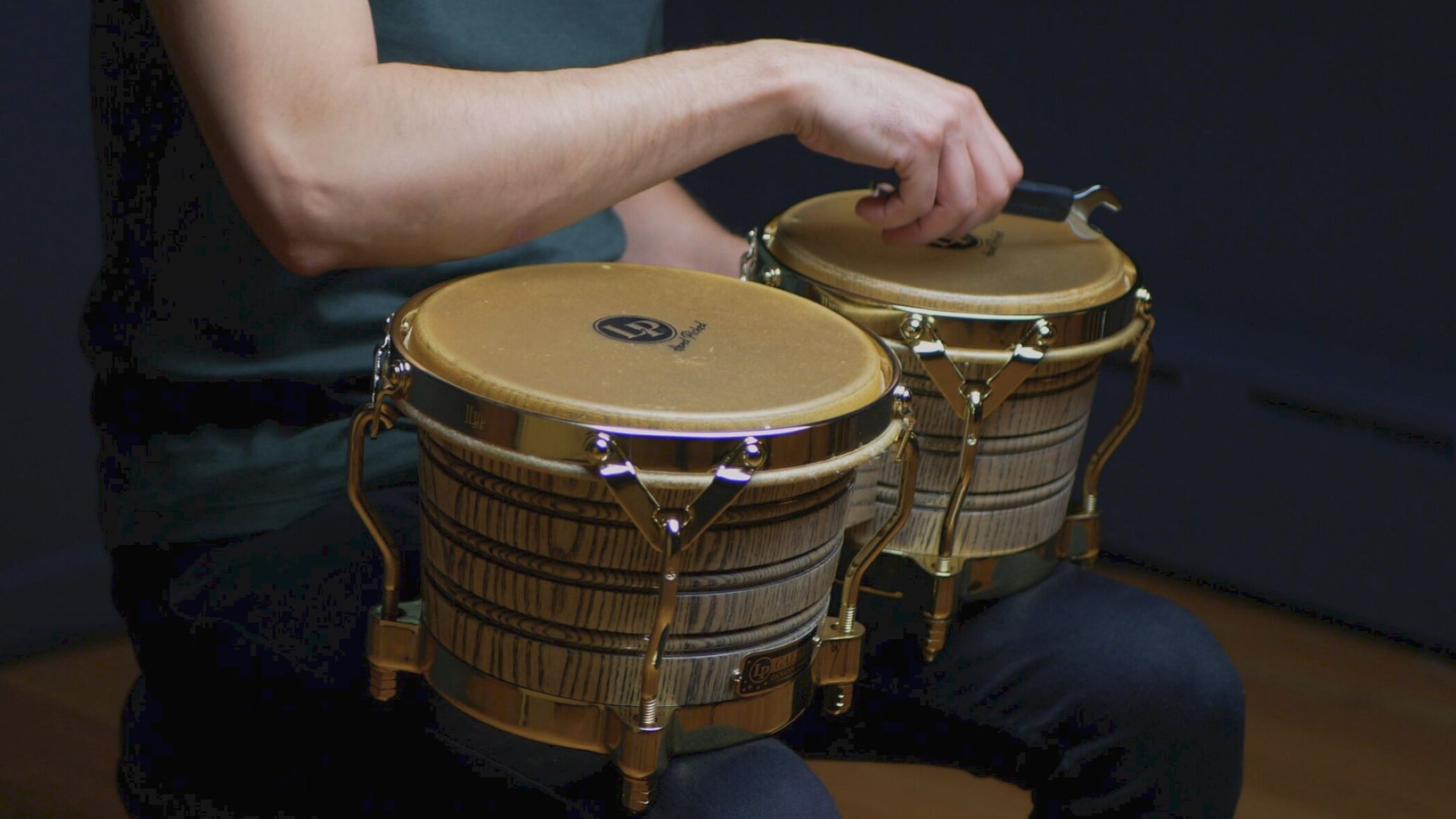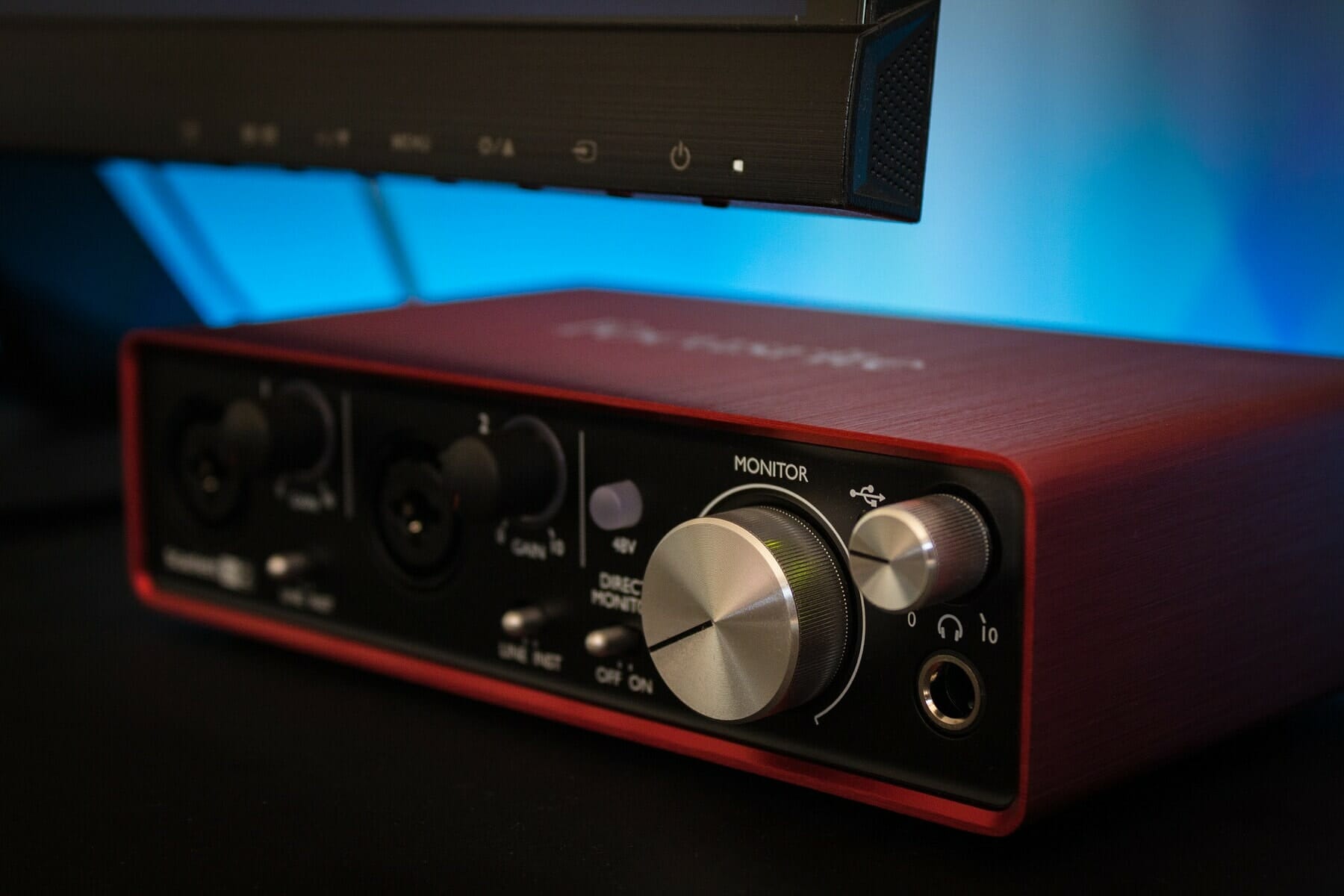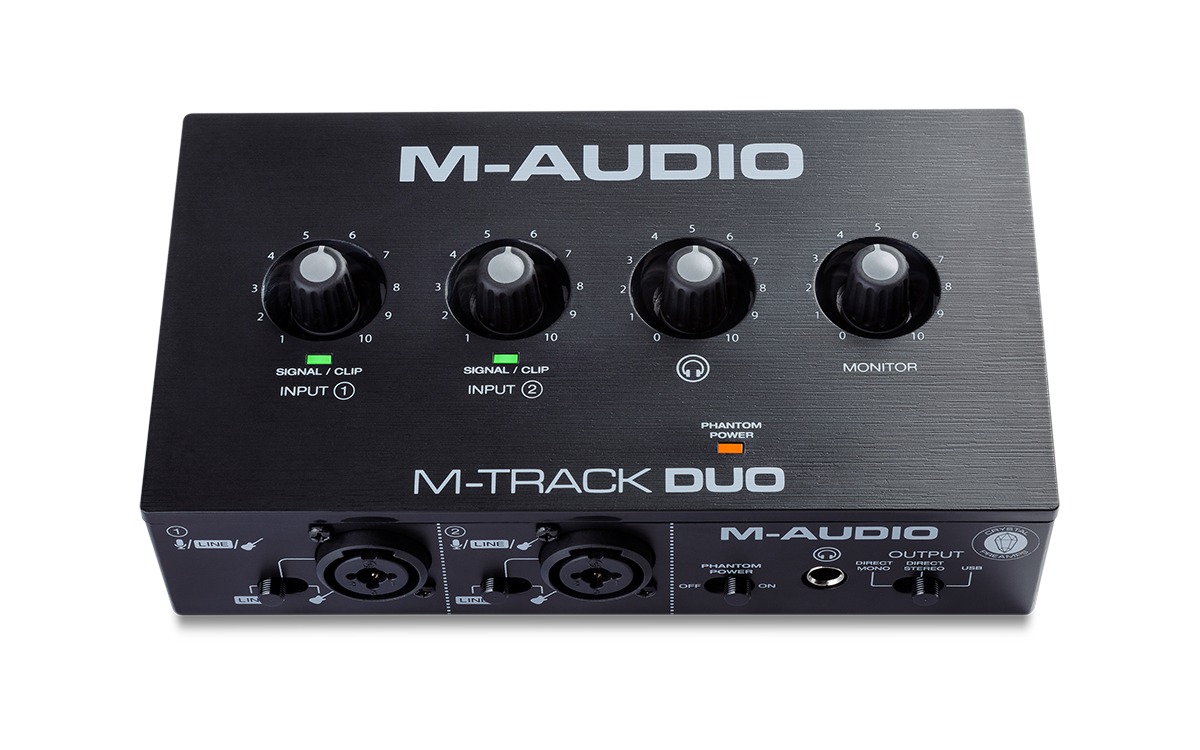Home>Production & Technology>Audio Interface>What Audio Interface Should I Get
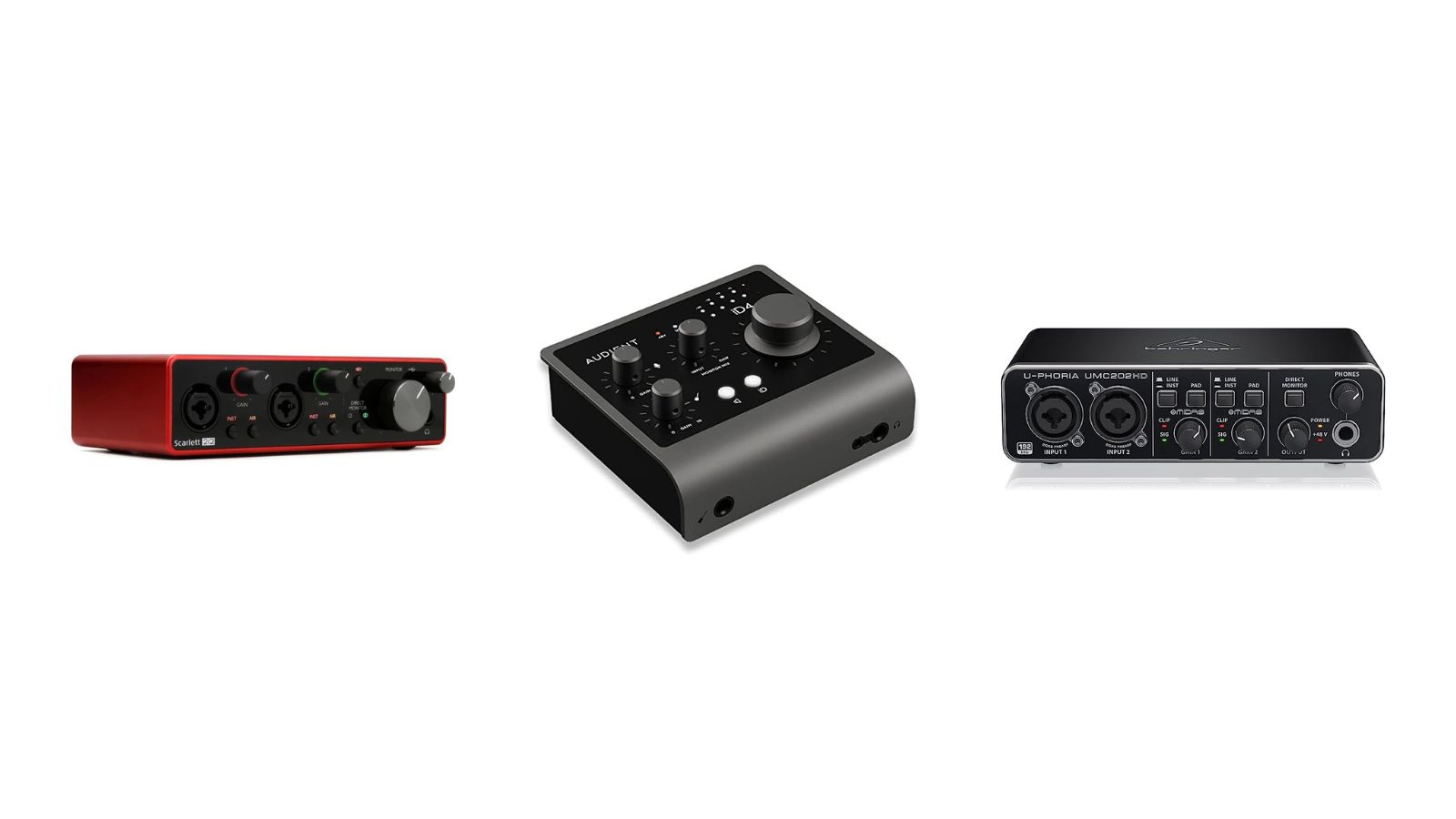

Audio Interface
What Audio Interface Should I Get
Published: February 3, 2024
Looking for the perfect audio interface? Discover the best options for your needs. Compare features, quality, and price to find the ideal audio interface.
(Many of the links in this article redirect to a specific reviewed product. Your purchase of these products through affiliate links helps to generate commission for AudioLover.com, at no extra cost. Learn more)
Table of Contents
Introduction
Welcome to the world of audio interfaces! Whether you’re a music enthusiast, podcaster, or a professional sound engineer, a good audio interface is essential for high-quality audio recordings. But with so many options available on the market, choosing the right one can be a daunting task.
An audio interface is a device that connects your computer to various audio equipment, such as microphones, instruments, or speakers. It serves as a bridge between the analog and digital worlds, ensuring that you capture and playback audio with utmost accuracy and clarity.
In this article, we’ll explore the world of audio interfaces in detail, helping you understand what they are, what factors to consider when purchasing one, and the different options available for different budgets and needs.
Whether you’re a beginner on a tight budget, a home studio enthusiast, or a professional working in a top-tier recording facility, we’ve got you covered. So let’s dive in, unravel the complexities of audio interfaces, and find the perfect one for you!
Understanding Audio Interfaces
Before we delve into the specifics of different audio interfaces, it’s important to understand their basic functionality. At its core, an audio interface is designed to convert analog audio signals into digital data that can be processed and recorded by your computer, and then convert the digital audio back into analog signals for playback through speakers or headphones.
Audio interfaces offer several advantages over using the built-in sound card on your computer. They typically provide higher quality audio conversion, lower latency, and more input/output options. Additionally, many audio interfaces come with preamps, which boost the signal from microphones or instruments to a usable level.
One key consideration when choosing an audio interface is the number and type of inputs and outputs you require. For example, if you plan on recording vocals and guitar simultaneously, you’ll want an interface with at least two XLR inputs and two instrument inputs. Similarly, if you need to connect external studio monitors, make sure your interface has balanced line outputs.
Another important factor to consider is the connection type. USB is the most common and widely supported interface, offering good data transfer speeds and compatibility with most computers. Thunderbolt interfaces are popular among professionals due to their faster speeds and lower latency, but they are typically more expensive. FireWire is less common these days, but some older devices may still use this connection.
Sample rate and bit depth are also crucial considerations. Higher sample rates (usually measured in kHz) offer better audio quality, but they also require more processing power. Bit depth affects the dynamic range and resolution of the audio. 24-bit is the standard for professional recordings, providing a greater range of volume levels and more precise audio reproduction.
Finally, it’s important to note that the software compatibility of an audio interface is also important. Make sure the interface you choose is compatible with your operating system (Windows, macOS, etc.) and the digital audio workstation (DAW) software you plan to use.
Now that we have a solid understanding of audio interfaces and their key features, let’s explore some of the factors to consider when purchasing one.
Factors to Consider
When it comes to choosing the right audio interface for your needs, there are several important factors to consider. Understanding these factors will help you make an informed decision and ensure that you invest in a device that suits your requirements and workflow.
1. Input and Output: Consider the number and type of inputs and outputs you need. This includes XLR inputs for microphones, line inputs for instruments, and line outputs for studio monitors. Make sure the interface has enough inputs and outputs to accommodate your recording setup.
2. Connection Type: USB is the most common and widely supported interface. Thunderbolt offers faster speeds and lower latency but can be more expensive. FireWire is less common but still used by some older devices. Choose a connection type that is compatible with your computer and offers the necessary data transfer speed.
3. Sample Rate and Bit Depth: Sample rate refers to the number of audio samples captured per second, and bit depth determines the resolution and dynamic range of the audio. Higher sample rates and bit depths generally result in better audio quality, but they require more processing power and storage space.
4. Preamps: Preamps are essential for amplifying the signal from microphones or instruments. Consider the quality and number of preamps the audio interface offers, as well as their compatibility with different types of microphones and instruments.
5. Software Compatibility: Ensure that the audio interface is compatible with your operating system and the digital audio workstation (DAW) software you plan to use. Check for any driver requirements or limitations that may affect your workflow.
6. Latency: Latency refers to the delay between inputting a sound and hearing the processed sound. Low-latency interfaces are crucial for musicians who need to monitor their recordings in real-time without being distracted by noticeable delays.
7. Budget: Set a budget range for your audio interface purchase. The price of audio interfaces can vary greatly depending on their features and quality. Determine how much you’re willing to invest and prioritize your requirements accordingly.
By considering these factors, you’ll be able to narrow down your options and find an audio interface that aligns with your specific audio recording needs. Now, let’s explore some budget-friendly options that offer great value for your money.
Budget-Friendly Audio Interfaces
If you’re just starting out or working with a limited budget, there are several affordable audio interfaces that still deliver excellent performance and functionality. These budget-friendly options offer great value for the money and are perfect for home studios, podcasters, and beginner musicians.
1. Focusrite Scarlett 2i2: This popular USB audio interface is known for its high-quality preamps and solid build quality. With two XLR inputs, two instrument inputs, and balanced TRS outputs, it provides everything you need for basic recording tasks. The Scarlett 2i2 also comes with Focusrite’s Scarlett Plug-in Suite, adding extra value to the package.
2. PreSonus AudioBox USB: The PreSonus AudioBox USB is a compact and affordable interface that offers two XLR inputs, MIDI I/O, and headphone outputs. It features Class-A mic preamps and supports up to 96 kHz sample rates. It also comes with the PreSonus Studio One Artist DAW software, making it a great all-in-one solution for beginners.
3. Behringer U-Phoria UM2: The Behringer U-Phoria UM2 is a budget-friendly option that still provides decent quality. It offers one XLR input, one instrument input, and headphone outputs. While it may not have all the bells and whistles of more expensive interfaces, it gets the job done for basic recording tasks.
4. M-Audio AIR 192|4: The M-Audio AIR 192|4 is a compact USB audio interface that offers two XLR inputs, two instrument inputs, and headphone outputs. It features Crystal Preamps and supports up to 24-bit/192kHz audio resolution. It also comes with a variety of software including Pro Tools | First and Ableton Live Lite, making it a great option for beginners and entry-level producers.
5. Steinberg UR12: The Steinberg UR12 is a compact and portable audio interface that offers one XLR input, one instrument input, and headphone outputs. It features Yamaha’s D-PRE mic preamp and supports up to 24-bit/192kHz audio resolution. It also comes bundled with Cubase AI software, providing a complete recording solution for starters.
While these budget-friendly audio interfaces may not offer all the advanced features of higher-priced options, they provide excellent value for the money and are a great starting point for those on a tight budget. As you gain more experience and expand your recording setup, you can always upgrade to more advanced interfaces in the future. Next, let’s explore some mid-range options that offer a balance of quality and affordability.
Mid-Range Audio Interfaces
If you have a bit more flexibility in your budget and require additional features and higher quality, mid-range audio interfaces offer an excellent balance between affordability and performance. These interfaces are suitable for intermediate musicians, content creators, and small studios who want more advanced features without breaking the bank.
1. Focusrite Scarlett 4i4: Building upon the success of the Scarlett 2i2, the Scarlett 4i4 offers two additional line inputs and outputs, making it a great option for those who need to connect more audio devices. It also features MIDI I/O, loopback functionality, and flexible routing options, giving you more versatility in your recording setup.
2. PreSonus AudioBox iTwo: The PreSonus AudioBox iTwo is a portable audio interface that offers two XLR inputs, MIDI I/O, and headphone outputs. It features high-quality preamps, low-latency monitoring, and supports up to 24-bit/96kHz audio resolution. It also comes bundled with PreSonus Studio One Artist DAW software, giving you a complete recording solution.
3. Universal Audio Apollo Twin MKII Duo: The Apollo Twin MKII Duo is a Thunderbolt audio interface known for its exceptional sound quality and built-in UAD-2 processing. It offers two mic preamps, two line outputs, and a Hi-Z instrument input. With its impressive DSP power, you can run UAD-powered plugins directly within your DAW, enhancing your recordings with authentic analog emulations.
4. Native Instruments Komplete Audio 6 MK2: The Komplete Audio 6 MK2 is a versatile audio interface that offers four analog inputs, four analog outputs, and MIDI I/O. It features high-quality preamps, balanced line outputs, and a direct monitoring option. It also comes with a collection of Native Instruments software and effects, making it a great choice for producers and electronic musicians.
5. Audient iD44: The Audient iD44 is a feature-rich audio interface that offers four Class-A mic preamps, two headphone outputs, and extensive I/O options. It features Burr-Brown AD/DA converters, scroll control for precise parameter adjustments, and a dedicated talkback function. With its exceptional sound quality and versatile connectivity, it’s an ideal choice for musicians, producers, and sound engineers.
These mid-range audio interfaces provide an excellent balance between affordability and advanced features. They are suitable for intermediate users who require more inputs/outputs, better sound quality, and additional functionality. However, if you’re a professional working in a high-demand studio environment, you may want to consider investing in a professional-grade audio interface for optimal performance. Let’s explore those options next.
Professional-Grade Audio Interfaces
For professionals and those seeking the highest level of audio quality and performance, professional-grade audio interfaces offer the utmost in terms of features, sound fidelity, and reliability. These interfaces are designed for professional studios, engineers, producers, and musicians who demand the best in their recordings and productions.
1. RME Fireface UCX: The RME Fireface UCX is a compact and powerful audio interface that offers unparalleled sound quality and low-latency performance. It features a wide range of I/O options, including mic preamps, line inputs and outputs, ADAT and SPDIF connectivity, and MIDI I/O. With its advanced TotalMix FX software, you have complete control over routing, mixing, and effects right from your computer.
2. Antelope Audio Zen Tour: The Antelope Audio Zen Tour is a portable and high-end audio interface that combines top-notch sound quality with extensive connectivity options. It features Antelope Audio’s renowned FPGA-based modeling technology, which offers accurate emulations of classic analog hardware. With its 12 mic preamps, comprehensive I/O, and onboard DSP effects, it’s an excellent choice for professional studios and mobile recording setups.
3. Universal Audio Apollo X8: The Apollo X8 is part of Universal Audio’s flagship line of Thunderbolt audio interfaces. It features elite-class A/D and D/A conversion, eight Unison mic preamps, and onboard UAD-2 QUAD Core processing. With its impressive sound quality, extensive plugin library, and near-zero latency, the Apollo X8 is a top choice for professionals looking for a cutting-edge audio interface.
4. Solid State Logic SSL 2+: The SSL 2+ combines legendary SSL analog sound with USB audio interface technology. It features two SSL-designed analog mic preamps, pristine conversion, and easy-to-use monitoring and recording controls. With its unique “Legacy 4K” mode, you can add a touch of classic SSL analog character to your recordings. It’s a perfect choice for producers, engineers, and musicians who want the renowned SSL sound in a compact package.
5. Apogee Symphony Desktop: The Apogee Symphony Desktop offers the renowned sound quality of Apogee’s Symphony series in a more affordable and compact form. It features Apogee’s Symphony AD/DA conversion, mic preamps, touch screen control, and a variety of input/output options. With its pristine audio quality and flexible control options, it’s an excellent choice for professional studios, producers, and audio engineers.
These professional-grade audio interfaces offer top-of-the-line sound quality, extensive connectivity options, and advanced features that meet the demands of professional studios and experienced producers. While they come with a higher price tag, they are built to deliver exceptional performance and reliability. Now, let’s explore some audio interfaces tailored for specific needs.
Audio Interfaces for Specific Needs
In addition to the general considerations for audio interfaces, there are also specialized options available to cater to specific needs and requirements. Whether you require interfaces for portable recording, live performances, or specialized connectivity, these options are designed to meet your unique demands.
1. Portable Recording: If you need an audio interface for on-the-go recording, options like the Zoom H6 or the Roland Duo-Capture EX are worth considering. These interfaces are compact, battery-powered, and offer built-in microphones, making them ideal for field recordings, podcasting, and mobile studios.
2. Live Performances: For musicians who need an interface for live performances, the MOTU UltraLite-mk4 and the PreSonus Studio 192 Mobile are excellent choices. These interfaces feature low-latency monitoring, multiple outputs for separate mixes, and robust construction to withstand the demands of the stage.
3. Digital Integration: If you are primarily working with digital audio hardware and need seamless integration, options like the Universal Audio Apollo X6 or the Focusrite RedNet range are perfect. These interfaces offer Dante or Thunderbolt connectivity, allowing for high-channel count, low-latency audio over Ethernet or Thunderbolt networks.
4. Podcasting: Content creators will appreciate audio interfaces like the Rode AI-1 or the Behringer U-Phoria UM-C. These interfaces provide easy connectivity to microphones, simple controls for recording and monitoring, and are often bundled with podcasting software for a complete podcasting solution.
5. Multiple Inputs: For studios or recording setups that require a large number of inputs, options like the MOTU 8M or the Behringer U-PHORIA UMC1820 are ideal choices. These interfaces offer numerous inputs, expandability options, and flexible routing capabilities to accommodate complex recording sessions.
These specialized audio interfaces are tailored to meet specific needs, ensuring that you have the right tools for your particular applications. By identifying your specific requirements, you can ensure that your audio interface choice aligns with your workflow and enhances your overall recording and production experience. As we wrap up this article, let’s summarize the key points we covered.
Conclusion
Choosing the right audio interface is a crucial decision for anyone involved in audio recording, production, or content creation. By understanding the key factors and considerations, you can find an interface that meets your specific needs and budget while delivering the audio quality and functionality you require.
We started by gaining an understanding of audio interfaces and their role in converting analog audio signals to digital data for recording and playback. We explored the importance of input/output options, connection types, sample rate and bit depth, preamps, software compatibility, and latency.
Next, we delved into different categories of audio interfaces based on budget and needs. We covered budget-friendly options that provide great value for beginners and those on a tight budget. We then explored mid-range interfaces that strike a balance between affordability and advanced features. Professional-grade interfaces were discussed for those who demand the highest level of audio quality and performance.
Additionally, we highlighted specialized interfaces for specific needs like portable recording, live performances, digital integration, podcasting, and multi-input requirements. These interfaces cater to unique applications and ensure that you have the right tools for your specific use case.
Ultimately, the ideal audio interface will depend on your specific requirements, budget, and desired features. It’s important to thoroughly research and compare various options, read reviews, and consider the long-term scalability and compatibility with your existing setup.
Remember, an audio interface is an investment in your audio production journey. Choose wisely, and it will serve as the backbone of your recording and production workflow, enabling you to capture and create professional-quality audio with ease.
So, take the time to explore your options, consider your needs, and make an informed decision. With the right audio interface by your side, you’ll be well on your way to achieving exceptional audio recordings and productions.

